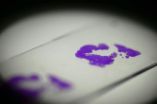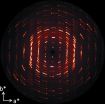(Press-News.org) Putnam Valley, NY. (June 5, 2014) – Scientists in Taiwan have found that intravenous injections of stem cells derived from human exfoliated deciduous tooth pulp (SHED) have a protective effect against brain damage from heat stroke in mice. Their finding was safe and effective and so may be a candidate for successfully treating human patients by preventing the neurological damage caused by heat stroke.
The study is published in a future issue of Cell Transplantation and is currently freely available on-line as an unedited early e-pub at: http://www.ingentaconnect.com/content/cog/ct/pre-prints/content-CT1100Tseng.
"Heat stroke deaths are increasing worldwide and heat stroke-induced brain injury is the third largest cause of mortality after cardiovascular disease and traumatic brain injury," said study lead author Dr. Ying-Chu Lin of the Kaohsiung Medical University School of Dentistry, Kaohsiung City, Taiwan. "Heat stroke is characterized by hyperthermia, systemic inflammatory response, multiple organ failure and brain dysfunction."
To investigate the beneficial and potentially therapeutic effects afforded by the protective activities of self-renewing stem cells derived from human exfoliated deciduous teeth, the scientists transplanted SHED into mice that had suffered experimental heat stroke.
According to the research team, these cells have "significantly higher proliferation rates" than stem cells from bone marrow and have the added advantages of being easy to harvest and express several growth factors, including vascular endothelial growth factor (VEGF), and they can promote the migration and differentiation of neuronal progenitor cells (NPCs).
"We observed that the intravenous administration of SHED immediately post-heat stroke exhibited several therapeutic benefits," said Dr. Lin. "These included the inhibition of neurological deficits and a reduction in oxidative damage to the brain. We suspect that the protective effect of SHED may be related to a decreased inflammatory response, decreased oxidative stress and an increase in hypothalamo-pituitary-adrenocortical axis activity following the heat stroke injury."
There are currently some drawbacks to the experimental therapy, said the researchers. First, there is a limited supply of SHED. Also, SHED transplantation has been associated with cancer and immune rejection.
"Further studies are warranted to determine the precise mechanism or production of SHED-mediated growth factors in our heat stroke model," concluded the researchers.
"This study provides the first step towards a potential therapy for the treatment of heat stroke" said Dr. Shinn-Zong Lin, professor of Neurosurgery and superintendent at the China Medical University Hospital, Beigang, Taiwan and Coeditor-in-chief of Cell Transplantation. "The use of SHED is an intriguing approach which requires further study to elucidate the cellular and secretory factors necessary for benefit."
INFORMATION:
Contact: Dr. Ying-Chu Lin
School of Dentistry
Kaohsiung Medical University
Kaohsiung City 807
Taiwan
Email: chulin@cc.kmu.edu.tw
Ph: +886 6 2812811 x 52657
Fax: +886 6 2832639
Citation: Tseng, L-S.; Chen, S-H.; Lin, M-T.; Lin, Y-C. Transplantation of human dental pulp-derived stem cells protects against heat stroke in mice. Cell Transplant. Appeared or available online: March 7, 2014.
The Coeditors-in-chief for CELL TRANSPLANTATION are at the Diabetes Research Institute, University of Miami Miller School of Medicine and Center for Neuropsychiatry, China Medical University Hospital, TaiChung, Taiwan. Contact, Camillo Ricordi, MD at ricordi@miami.edu or Shinn-Zong Lin, MD, PhD at shinnzong@yahoo.com.tw or David Eve, PhD at celltransplantation@gmail.com
News release by Florida Science Communications http://www.sciencescribe.net
Future heat stroke treatment found in dental pulp stem cells
2014-06-05
ELSE PRESS RELEASES FROM THIS DATE:
Science Elements podcast highlights chemistry for search-and-rescue missions
2014-06-05
The June feature of Science Elements, the American Chemical Society's (ACS') weekly podcast series, shines the spotlight on devices that use chemistry to locate people trapped in collapsed buildings. The episode is available at http://www.acs.org/scienceelements.
Every second counts when people are trapped in the rubble of a collapsed building. As survivors breathe in a confined space, oxygen levels go down and carbon dioxide levels go up, a potentially lethal combination. People also can have severe injuries from the falling walls and other debris.
In the episode, ...
State of wildland fire emissions, carbon, and climate research
2014-06-05
RIVERSIDE, Calif.—Scientists know that wildland fire emissions play a significant role in the global carbon cycle and that its principal component – carbon dioxide – is a primary driver of climate change. But predicting and quantifying the effects of potential future emissions is a difficult process requiring the integration of complex interactions of climate, fire, and vegetation. The current state of knowledge, critical knowledge gaps, and importance of fire emissions for global climate and terrestrial carbon cycling is the focus of nine science syntheses published in ...
Team demonstrates continuous terahertz sources at room temperature
2014-06-05
Imagine a technology that could allow us to see through opaque surfaces without exposure to harmful x-rays, that could give us the ability to detect harmful chemicals and bio-agents from a safe distance, and that could enable us to peer so deeply into space that scientists could better understand the formation of the universe.
All of these scenarios are possible with terahertz radiation, electromagnetic waves with lengths that fall between microwaves and infrared light. However, the potential of terahertz waves has yet to be reached because they are difficult to generate ...
Race could be a factor in head and neck cancer survival rates, MU researchers find
2014-06-05
COLUMBIA, Mo. — The national survival rates for African-Americans diagnosed with head and neck cancer have not improved in the last 40 years despite advances in the treatment and management of the disease, University of Missouri School of Medicine researchers have found in a new study.
More than 52,000 men and women in the United States currently are living with head and neck cancer. Using data from the National Cancer Institute's Surveillance, Epidemiology and Ends Results (SEER) program, MU researchers under the guidance of Mosharraf Hossain, M.D., assistant professor ...
Can mice mimic human breast cancer? MSU study says 'yes'
2014-06-05
Scientists have routinely used mice to replicate aspects of human breast cancer in an effort to find a cure to the most common type of cancer among women.
But how effective are these preclinical models in actually mimicking the disease and giving scientists the ability to develop real comparisons?
Eran Andrechek, a physiology professor in the College of Human Medicine at Michigan State University, has discovered that many of the various models used in breast cancer research can replicate several characteristics of the human disease, especially at the gene level.
The ...
Design of self-assembling protein nanomachines starts to click
2014-06-05
A route for constructing protein nanomachines engineered for specific applications may be closer to reality.
Biological systems produce an incredible array of self-assembling, functional protein tools. Some examples of these nanoscale protein materials are scaffolds to anchor cellular activities, molecular motors to drive physiological events, and capsules for delivering viruses into host cells.
Scientists inspired by these sophisticated molecular machines want to build their own, with forms and functions customized to tackle modern-day challenges.
The ability to ...
Study discovers the downside of African-American success stories
2014-06-05
African-Americans such as Brown University President Ruth Simmons, Nobel Laureate Toni Morrison, and of course President Barack Obama have reached the pinnacle of success in historically white domains. But a new study finds there is a downside to African-American success stories: these positive examples prompt white Americans to think less successful African-Americans simply need to apply more effort to achieve their own success.
The findings are reported in the paper, "If He Can Do It, So Can They: Exposure to Counterstereotypically Successful Exemplars Prompts Automatic ...
Has solar activity influence on the Earth's global warming?
2014-06-05
A recent study demonstrates the existence of significant resonance cycles and high correlations between solar activity and the Earth's averaged surface temperature during centuries. This provides a new clue to reveal the phenomenon of global warming in recent years.
Their work, entitled "Periodicities of solar activity and the surface temperature variation of the Earth and their correlations" was published in CHINESE SCIENCE BULLETIN (In Chinese) 2014 No.14 with the co-corresponding authors of Dr. Zhao Xinhua and Dr. Feng Xueshang from State key laboratory of space weather, ...
Gestures research suggests language instinct in young children
2014-06-05
Young children instinctively use a 'language-like' structure to communicate through gestures.
Research led by the University of Warwick suggests when young children are asked to use gestures to communicate, their gestures segment information and reorganise it into language-like sequences. This suggests that children are not just learning language from older generations, their preference for communication has shaped how languages look today.
Dr Sotaro Kita from Warwick's Department of Psychology led the study with Dr Zanna Clay at the University of Neuchatel, Ms Sally ...
Understanding active pharmaceutical ingredients
2014-06-05
Active pharmaceutical ingredient (API), is the term used to refer to the biologically active component of a drug product (e.g. tablet, capsule). Drug products are usually composed of several components. The aforementioned API is the primary ingredient. Other ingredients are commonly known as "excipients" and these substances are always required to be biologically safe, often making up a variable fraction of the drug product. The procedure for optimizing and compositing this mixture of components used in the drug is known as "formulation". For example, if the API is a solid ...





